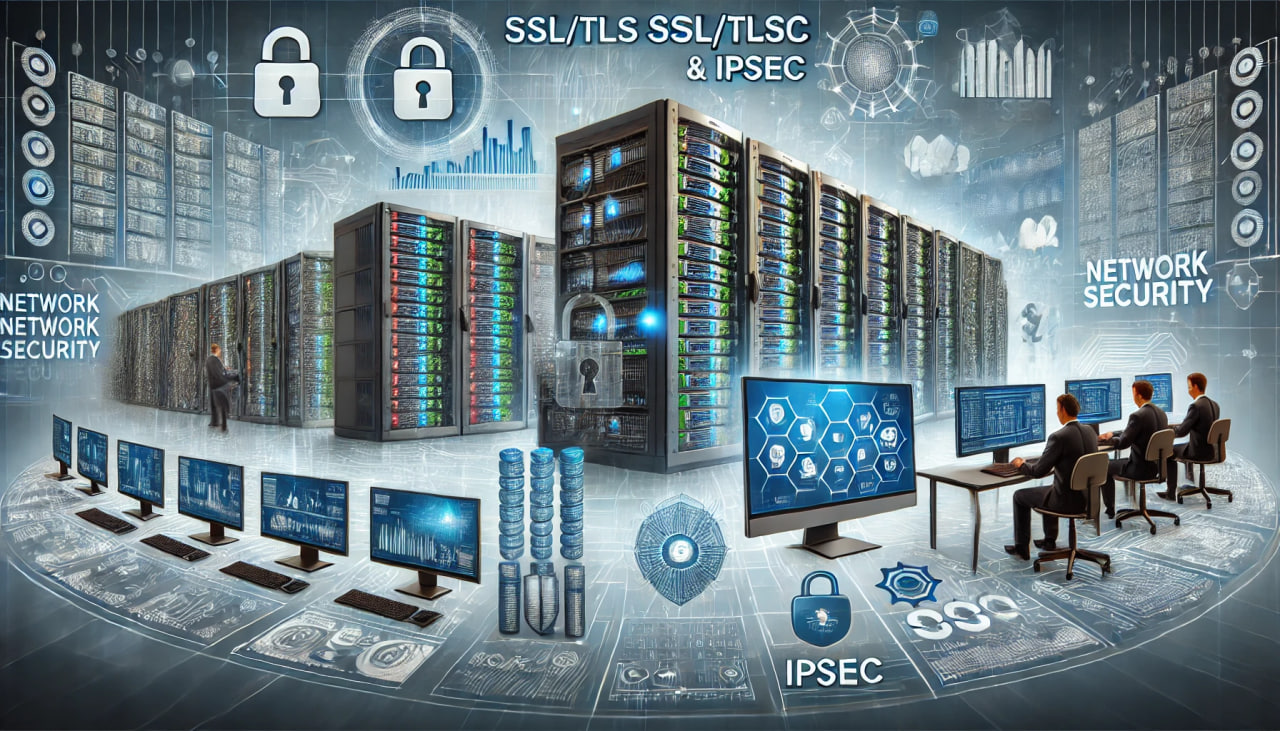Modern Network Security Protocols: From SSL/TLS to Zero Trust
 Christopher Wilson
Christopher Wilson
In today's digital landscape, network security is paramount. As cyber threats evolve, so do the protocols designed to protect data and ensure secure communications. This article delves into the world of modern network security protocols, tracing the journey from SSL/TLS to the contemporary concept of Zero Trust. By exploring these technologies, we can understand how they work, their significance, and how they contribute to a secure digital environment.
The Evolution of Network Security Protocols
SSL/TLS: The Cornerstone of Secure Communications
Secure Sockets Layer (SSL) and its successor, Transport Layer Security (TLS), have long been the bedrock of secure communications over the internet. Initially developed by Netscape in the mid-1990s, SSL was designed to encrypt data transmitted between a web server and a browser, ensuring confidentiality and integrity.
SSL operates through a handshake process, where the server and client exchange keys to establish an encrypted connection. This process involves the use of asymmetric cryptography for key exchange, followed by symmetric encryption for data transfer, ensuring both security and performance.
As SSL evolved, vulnerabilities were discovered, leading to the development of TLS, which addressed these issues and offered enhanced security features. Today, TLS is widely used for securing web communications, including HTTPS, email protocols like SMTPS, and more.
IPsec: Securing Internet Protocol Communications
Internet Protocol Security (IPsec) is another crucial protocol in the realm of network security. Unlike SSL/TLS, which secures data at the transport layer, IPsec operates at the network layer, providing end-to-end security for IP communications.
IPsec consists of a suite of protocols designed to secure IP packets through authentication, integrity checking, and encryption. It employs two main modes: Transport Mode, which encrypts only the payload of the IP packet, and Tunnel Mode, which encrypts the entire packet, including the header. This flexibility allows IPsec to be used in various scenarios, from securing individual device communications to creating Virtual Private Networks (VPNs).
SSH: Secure Remote Access
Secure Shell (SSH) is a protocol designed to provide secure remote access to systems. Developed as a replacement for the insecure Telnet protocol, SSH uses strong encryption to protect data transmitted between the client and the server. This includes login credentials, command executions, and file transfers.
SSH operates through a client-server model, where the client initiates a connection to the server using an SSH client application. The server, running an SSH daemon, authenticates the client using public key cryptography, passwords, or other methods. Once authenticated, the client can securely interact with the server, making SSH indispensable for system administrators and developers.
Advanced Protocols for Modern Network Security
HTTPS: Securing Web Traffic
Hypertext Transfer Protocol Secure (HTTPS) is an extension of HTTP that incorporates SSL/TLS to secure web traffic. By encrypting data between the browser and the web server, HTTPS prevents eavesdropping, tampering, and man-in-the-middle attacks.
HTTPS has become the standard for securing web communications, with major web browsers flagging non-HTTPS sites as insecure. This shift has driven widespread adoption, ensuring that sensitive information, such as login credentials and payment details, is protected during transmission.
DNSSEC: Ensuring Domain Name System Security
The Domain Name System (DNS) is a critical component of the internet, translating human-readable domain names into IP addresses. However, DNS is vulnerable to attacks such as cache poisoning and spoofing. Domain Name System Security Extensions (DNSSEC) address these vulnerabilities by adding cryptographic signatures to DNS data, ensuring its authenticity and integrity.
DNSSEC works by signing DNS records with a private key, which can be verified by clients using the corresponding public key. This ensures that DNS responses have not been tampered with, providing an additional layer of security for internet communications.
Zero Trust: A Paradigm Shift in Network Security
Zero Trust is not a single protocol but a comprehensive security framework that challenges the traditional perimeter-based security model. Instead of assuming that everything inside the network is trustworthy, Zero Trust operates on the principle of "never trust, always verify."
In a Zero Trust model, every user, device, and application must be authenticated and authorized before accessing resources, regardless of their location. This approach involves continuous monitoring, least privilege access, and micro-segmentation to minimize the attack surface and limit the impact of potential breaches.
Implementing Zero Trust
Implementing Zero Trust involves several key components:
Identity and Access Management (IAM): Robust IAM systems ensure that only authenticated and authorized users can access resources. Multi-factor authentication (MFA) and single sign-on (SSO) are critical elements of IAM in a Zero Trust environment.
Micro-Segmentation: Dividing the network into smaller segments limits lateral movement by attackers. Each segment has its own security controls, ensuring that a breach in one segment does not compromise the entire network.
Continuous Monitoring: Real-time monitoring and analysis of network traffic and user behavior enable the detection and response to anomalies and potential threats. This includes using technologies such as Security Information and Event Management (SIEM) and User and Entity Behavior Analytics (UEBA).
Least Privilege Access: Users and devices are granted the minimum level of access necessary to perform their tasks. This principle reduces the risk of unauthorized access and limits the potential damage from compromised accounts.
The Future of Network Security Protocols
As cyber threats continue to evolve, so must network security protocols. Emerging technologies such as quantum computing pose new challenges and opportunities for encryption and security. Quantum-resistant cryptographic algorithms are being developed to safeguard data against future quantum attacks.
Moreover, the increasing adoption of cloud computing and IoT devices necessitates new security approaches. Protocols that can seamlessly integrate with diverse and distributed environments will be crucial for maintaining security in these complex landscapes.
Conclusion
From SSL/TLS to Zero Trust, modern network security protocols have come a long way in ensuring secure communications and protecting sensitive data. Each protocol plays a vital role in addressing different aspects of network security, from encrypting web traffic to securing remote access and implementing comprehensive security frameworks. As the digital landscape continues to evolve, staying informed about these protocols and their best practices is essential for safeguarding our networks and data against ever-growing cyber threats.
https://fileenergy.com/pokupki-v-kitae/hdmi-splitter-razvetvitel-1-v-2-out-1080p-4k
Subscribe to my newsletter
Read articles from Christopher Wilson directly inside your inbox. Subscribe to the newsletter, and don't miss out.
Written by
